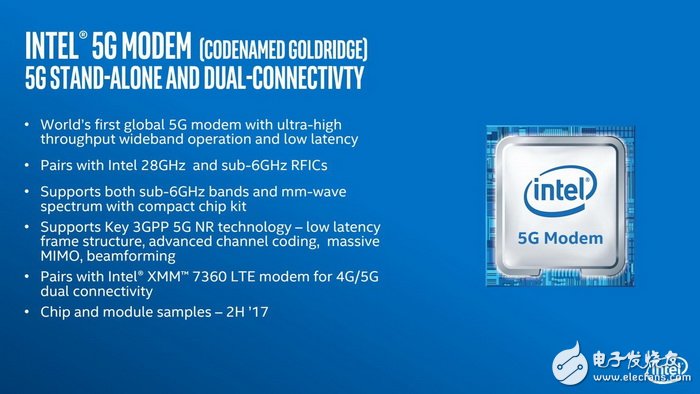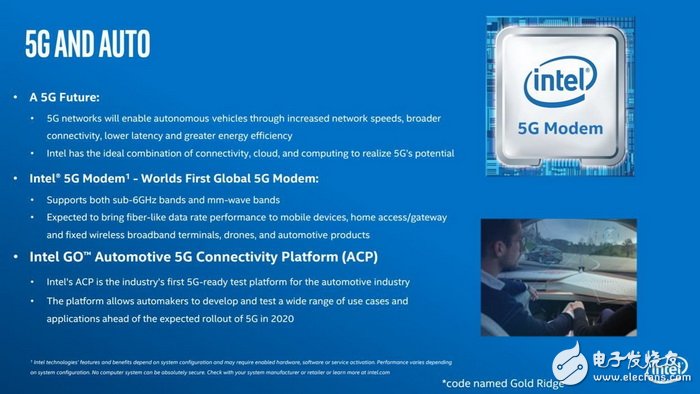In the 4G era, Intel also wanted to make a difference in the mobile market, but after losing more than 7 billion subsidies, an important factor that led to Intel's failure is that their 4G network technology is not as widely accepted as Qualcomm.
5G is a historic turning point for the technology industry, bringing seamless connectivity, massive computing power and fast access to cloud resources for everyone, things and industry. With its unparalleled expertise in wireless, networking, cloud computing and data analytics, Intel is leading the way to 5G, laying the groundwork for the 5G era.
Today, Intel's 5G product portfolio has been added to Intel's 5G product portfolio. It is the world's first globally versatile 5G modem with a baseband chip capable of supporting both the 6GHz band and the millimeter wave band, and is designed to facilitate the global testing and deployment of the initial 5G band. The modem supports ultra-wideband operation, ultra-low latency gigabit network throughput, and is used with Intel's undergrowth 5GRFIC and 28GHz 5G RFIC to support 5G systems in different major frequency bands around the world.

Intel's new 5G transceiver is the first 5GRFIC capable of supporting both the 6GHz band and the millimeter wave band, and will be used with the proven 28GHz RFIC. The latter was released as part of the Intel Mobile Test Platform at the Mobile World Congress in early 2016.

Designed for applications with early 5G deployment requirements, the Intel 5G modem is expected to be used by industry-leading carriers and vendors for early 5G deployments in the automotive, home broadband and mobile devices sectors.
Key features - 5G modem
The world's first single chip capable of supporting both 5GHz and 5G operation in the 5GHz band.
Meet critical 5G technology requirements, including expected speeds in excess of 5Gbps, aggregated bandwidths of hundreds of MHz, and ultra-low latency.
Used in conjunction with the world's first 5G RFIC in the under 6GHz band and the proven 28GHz 5G millimeter wave RFIC.
Meets 5G specifications for multiple industry forums
Supports key 5G NR technology features including low latency frame structure, advanced channel coding, massive MIMO, and beamforming.
Can be used with LTE modems such as the Intel XMM® 7360 LTE modem to support 4G fallback and 4G/5G interoperability.
Key Features - 5G RFIC
When used in conjunction with Intel's 5G millimeter-wave RFIC, it supports the deployment of the initial 5G band worldwide through a single SKU.
Supports the 3.3-4.2 GHz portion of the band below 6 GHz, enabling deployment and trials in China and Europe through flexible sub-channelization.
Support for the 28 GHz band for deployment and testing in the US, Korea and Japan.
Supports 2x2 and 4x4 MIMO configurations, including dual-polarized sub-channelization.
Design a compact chip size.



Multi Conductor Terminal Blocks
Multi Spring Terminal Block,4 Conductor Terminal Blocks,Spring Levels Terminal Blocks,Twin Terminal Blocks
Wonke Electric CO.,Ltd. , https://www.wkdq-electric.com